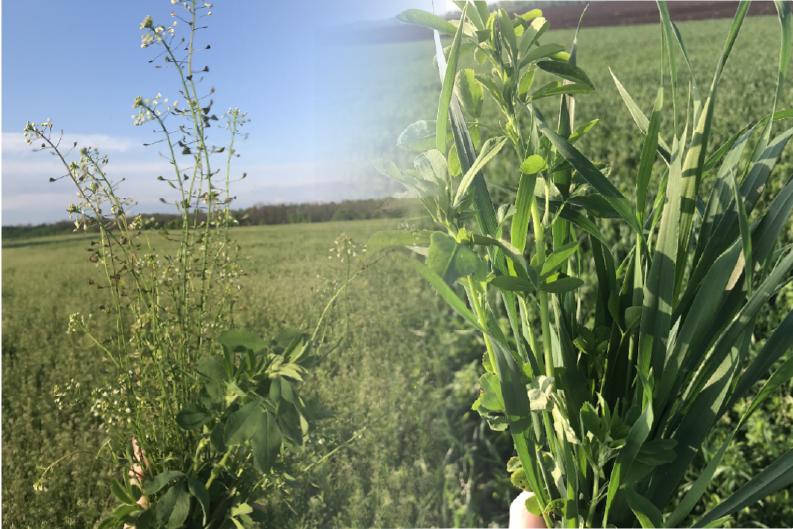
By Gennadii Bondarenko
Ruminant Nutrition Consultant
Grand Valley Fortifiers
Fall is a good time to review the current condition of alfalfa fields at the farm, evaluate haylage/hay yields achieved from the fields in the current forage production season and make a proper decision on continuing the use of the alfalfa field in the next growing season or rotating it to another crop.
Industry standards recommend stopping using an alfalfa field when the plant density thins to 60-70 plants per square meter. The reasons for this decision are lower yields and impaired quality of hay/haylage due to the large presence of “opportunistic weeds” in the alfalfa stand.
One option to help extend the productive life of an alfalfa stand, is to interseed winter triticale into the stand in the fall. In 2018 we successfully tested this idea on one of the Ukrainian dairies (1300 cows, 38-39 kg milk) that
I worked with. We had two fields with thin alfalfa on the farm and decided to try interseeding winter triticale on one field and leaving the other as a control. We followed the recommendations out of New York, where agronomists/ producers had previously been doing this practice successfully. We interseeded with a no-till drill at 90 kg/ha (80 lbs/ac) of triticale at seed depth 3-4 cm (see the photo 1 below).
We interseeded with a no-till drill at 90 kg/ha (80 lbs/ac) of triticale at seed depth 3-4 cm (see the photo 1 below).

For fertilizer, we applied 23 kg/ha (20 lbs/ac) N and 120 kg/ha (107 lbs/ac) K at planting and 120 kg/ha (107 lbs/ac) of N was applied in the early spring. Although alfalfa does fix nitrogen, it cannot supply the high rates of N needed for triticale growth, so fertilizer with N is essential. Application of potassium should be adjusted to existing soil fertility and typically varies from 60-120 kg/ha (60-107 lbs/ac).
As a result of interseeding winter triticale, we obtained a nice triticale-alfalfa stand at the time of first cut. Triticale was at the flag leaf stage while alfalfa was at the bud stage (see the photos below).


Photo 2 Alfalfa-triticale stand at the time of first cut (May 10, 2019)
The control field, not interseeded with triticale, demonstrated quite a different picture at the time of first cut – the weeds occupied a significant portion of that field (Photo 3).
This article was written for the Fall 2023 Eastern Dairy Grist. To read the whole Dairy Grist, click the button below.


Photo 3 Alfalfa stand not interseeded with triticale at the time of first cut (May 10, 2019)
With fiber digestibility being the most critical factor that regulates feed intake, forages with lower fiber digestibility have higher content of indigestible fiber (literally saying “wood chips”), and those “wood chips” dramatically limit the amount of forage dry matter that the cow will consume voluntarily, thus reducing achievable milk yield from forages and increasing the amount of purchased feeds in the ration.
In addition to improved quality, we achieved a significant difference in dry matter yields from these two fields. The alfalfa-triticale field produced 4 tonnes DM/ha (1.6 tonnes DM/ac) of haylage at first cut, while alfalfa-weed field made only 2.8 tonnes DM/ha (1.1 tonnes DM/ac).
The achieved results clearly demonstrated that interseeding winter triticale allowed us to successfully extend the productive life of aging/thin alfalfa stand and increase yield and quality of haylage. In addition, this technological approach allowed us to improve the root mass in the soil, increase the carbon sequestration and soil fertility which are additional ecological benefits. When assessing your hay crop fields this fall, interseeding winter triticale into your aging alfalfa stands could be an excellent opportunity for you.
This article was written for the Fall 2023 Eastern Dairy Grist. To read the whole Dairy Grist, click the button below.

